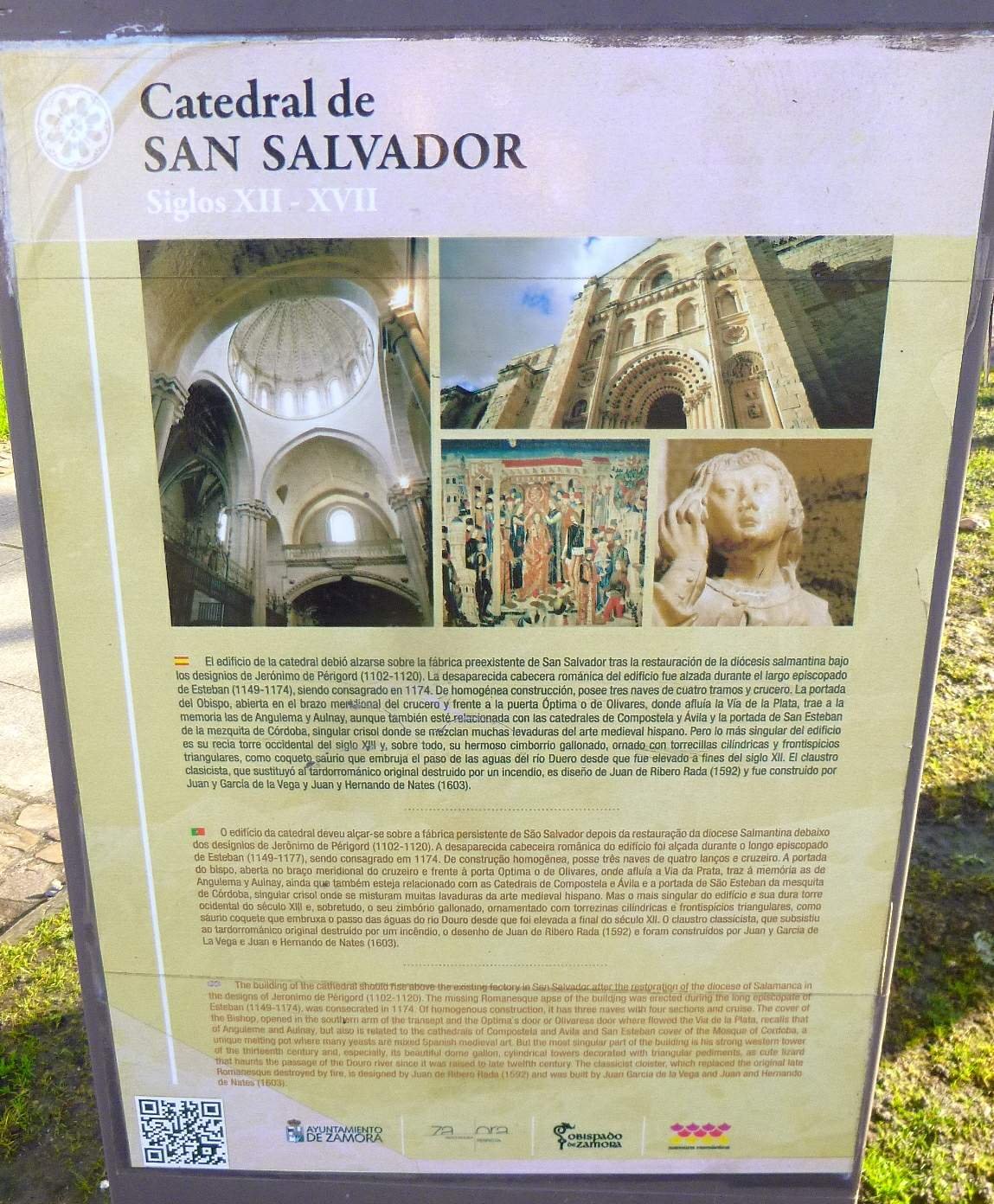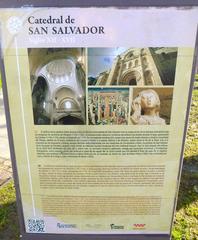
Cathedral of Zamora: Visiting Hours, Tickets, and Travel Guide
Date: 14/06/2025
Introduction
The Cathedral of Zamora, standing in the heart of Zamora, Spain, is one of the finest examples of Spanish Romanesque architecture. Built primarily in the 12th century under the reign of King Alfonso VII, it has served as a spiritual, architectural, and cultural landmark for centuries. Its distinctive Byzantine-inspired dome, robust stonework, and layered stylistic influences make it a must-see for history enthusiasts, art lovers, and pilgrims alike.
Whether you’re planning a pilgrimage along the Vía de la Plata, seeking insight into medieval Spanish architecture, or simply exploring Zamora’s rich historical landscape, this guide provides all the essential information: visiting hours, ticket details, accessibility, architectural highlights, and nearby attractions (Wikipedia, Spain.info, Spotting History, Pilgrimage Traveler).
Table of Contents
- History and Architectural Evolution
- Cultural and Religious Significance
- Visiting Information: Hours, Tickets, and Accessibility
- Guided Tours and Museum
- Nearby Attractions and Travel Tips
- Frequently Asked Questions (FAQ)
- Summary and Call to Action
- Sources
History and Architectural Evolution
Romanesque Foundations
Construction of the Cathedral of Zamora began around 1139 and continued until its consecration in 1174. The original church on this site had fallen into disrepair, prompting King Alfonso VII, his sister Sancha Raimúndez, and Bishop Esteban to commission a new cathedral (Wikipedia, Spotting History). The design follows the Latin cross plan, with three naves, a short transept, and three semicircular apses, later replaced with Gothic ones.
Robust stone blocks, rounded arches, and minimal ornamentation characterize its Romanesque style. The nave features a cross vault, the transept a barrel vault, and the aisles are covered with groin vaults—demonstrating the transitional architectural trends of the time (Spain.info).
The Iconic Dome and Later Modifications
The cathedral’s most distinctive feature is its gallonade dome, a rare example of Byzantine influence in Western Europe. Supported by 16 double arches and covered in stone scales, the dome is visible from afar and became a model for other regional churches, such as the Old Cathedral of Salamanca (Turismo Castilla y León).
Subsequent centuries brought Gothic and Baroque additions. The apses were replaced with Gothic ones in the 15th century. The 13th-century bell tower, rising 45 meters, and the sculpted south portal (Puerta del Obispo) further enhance its profile (Spotting History). Renaissance and Herrerian styles appear in the cloister and side chapels, while the choir stalls and interior artworks reflect the evolving tastes of later periods.
Cultural and Religious Significance
The Cathedral of Zamora is more than an architectural marvel; it is the spiritual heart of the city and the diocese. As the main seat of the bishop, it anchors local religious life, hosts major liturgical celebrations, and serves as a vital stop on the Vía de la Plata pilgrimage route to Santiago de Compostela (Transromanica).
The cathedral’s influence extends beyond faith. It stands as the “crown jewel” among Zamora’s 24 Romanesque churches, symbolizing the city’s tradition of cultural exchange—its architecture fusing Romanesque, French, Byzantine, and Hispano-Muslim motifs. Throughout the centuries, the cathedral has survived wars, fires, and political upheaval, remaining a symbol of civic identity and resilience (GoNOMAD).
Inside, the Cathedral Museum (Museo Catedralicio) presents an extraordinary collection of Flemish tapestries, liturgical objects, and sacred art. The intricate choir stalls, painted altarpieces, and the expressive figure of Christ by Gaspar Becerra highlight the cathedral’s artistic legacy (Spotting History).
Visiting Information: Hours, Tickets, and Accessibility
Location and Access
The Cathedral of Zamora is located at Plaza Antonio del Águila, in Zamora’s old town. It’s within easy walking distance of the Castle of Zamora and several other Romanesque churches (Pilgrimage Traveler). Public parking is available nearby, though spaces may be limited during busy periods.
Opening Hours
- Closed on Mondays
- Tuesday to Saturday: 10:00 a.m. – 2:00 p.m. and 5:00 p.m. – 8:00 p.m.
- Sunday: Open in the morning only (hours may vary)
- Note: The cathedral closes for midday siesta. Hours may differ on holidays or during special events. Always verify on the official Zamora tourism website or Cathedral website.
Tickets
- Adults: €3–€5
- Reduced rates: Available for seniors, students, and groups
- Children under 12: Free
- Special exhibitions or museum access: May incur extra fees
- During Mass: Entry is generally free, but visitation is limited to worship
Tickets can be purchased onsite or, when available, online through official channels.
Accessibility
- Wheelchair access: Ramps are present at the main entrance; most of the nave is accessible, though some areas (e.g., parts of the cloister) have steps or uneven floors.
- Facilities: Accessible restrooms are available.
- Audio guides and brochures: Offered in multiple languages.
Guided Tours and Museum
- Guided tours: Available in several languages through the cathedral or local tourism offices. Advance booking is recommended, especially during peak seasons.
- Audio/Virtual tours: The Zamora tourism board and cathedral website offer virtual tours for remote visitors.
- Cathedral Museum: The cloister houses a museum with highlights such as Flemish tapestries, Gothic monstrances, and sacred art.
Nearby Attractions and Travel Tips
Key Sights within Walking Distance
- Castillo de Zamora: 11th-century fortress with panoramic views of the cathedral and city. Open from 10:00 a.m. – 2:00 p.m. and 5:00 p.m. – 8:00 p.m., closed Mondays.
- Mirador del Troncoso: Offers sweeping views over the Douro River and medieval bridge.
- Romanesque Churches: Santa María Magdalena and San Pedro y San Ildefonso are nearby, with similar visiting hours.
- Plaza Mayor and Plaza de Viriato: Central squares with shops, restaurants, and the historic Parador hotel.
Visitor Tips
- Dress code: Shoulders and knees must be covered inside the cathedral.
- Photography: Allowed without flash or tripod; restrictions may apply during services.
- Best times to visit: Early mornings or late afternoons for quieter visits and optimal lighting.
- Mobility: Cobblestone streets surround the cathedral; comfortable walking shoes are advised.
Frequently Asked Questions (FAQ)
Q: What are the Cathedral of Zamora’s visiting hours?
A: Closed Mondays. Tuesday to Saturday: 10:00 a.m. – 2:00 p.m. and 5:00 p.m. – 8:00 p.m. Sunday: mornings only. Hours may vary—check official sources.
Q: How much are tickets?
A: €3–€5 for adults, with discounts for seniors and students. Children under 12 usually enter free.
Q: Is the cathedral wheelchair accessible?
A: The main entrance is accessible, but some areas have steps. Assistance is available.
Q: Are guided tours available?
A: Yes, bookable through the cathedral or local tourism offices.
Q: Can I take photos inside?
A: Photography is allowed in most areas, but flash and tripods are restricted.
Q: What else should I visit nearby?
A: The Castle of Zamora, Mirador del Troncoso, and several Romanesque churches are highly recommended.
Summary and Call to Action
The Cathedral of Zamora is a living testament to medieval artistry, spiritual devotion, and cultural resilience. Its iconic dome, rich museum collection, and central role in Zamora’s heritage make it an essential stop for visitors. With well-structured visiting hours, affordable tickets, and accessible facilities, every traveler can enjoy an enriching experience.
Plan your visit to the Cathedral of Zamora and discover not only a masterpiece of Romanesque architecture but also the vibrant life of a city steeped in history. For up-to-date information, guided tours, and virtual experiences, download the Audiala app and follow official Zamora tourism channels. Explore more about Zamora’s historical sites and Spanish Romanesque heritage through our related articles.
Sources
- Cathedral of Zamora: A Complete Visitor’s Guide to History, Architecture, and Practical Information, 2025, HollyMelody
- Zamora Cathedral: Visiting Hours, Tickets, and Historical Guide to Zamora’s Iconic Monument, 2025, Spotting History
- The Cathedral of Zamora: Cultural Significance, Visiting Hours, Tickets, and Visitor Guide, 2025, Transromanica
- Visiting the Cathedral of Zamora: Hours, Tickets, and Nearby Historical Sites, 2025, Pilgrimage Traveler
- Cathedral of Zamora, Wikipedia
- Cathedral of Zamora, Spain.info
